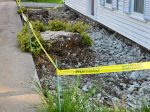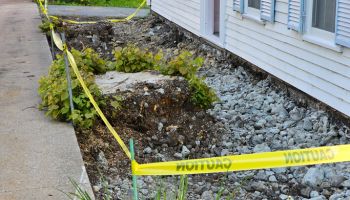Copiapo, Chile (CNN) — By late Wednesday afternoon, rescuers had winched to the surface more than two-thirds of the 33 miners trapped in a northern Chile gold and copper mine, and the world marveled at a “mission incredible.”
After 69 harrowing days, the miners ascended to freedom one by one, hoisted through a half-mile of rock in a rescue mission that began in the numbing chill of a desert night and continued under the searing sun of a cloudless day.
As they emerged from the ground in a red, white and blue capsule, some of the miners signaled a thumbs-up. Others waved Chilean flags. One led the crowd in a chant for Chile. Some dropped to their knees and prayed. Mostly, though, they embraced their families.
Chilean President Sebastian Pinera called the mission “magical.” U.S. President Barack Obama called it a “tremendously inspirational story.”
Florencio Avalos was the first to step out of the “Fenix” capsule, named for the mythical bird that rose from ashes.
He beamed as his feet touched the surface of the Earth that had smothered him, then cradled his son and wife before Pinera bear-hugged him.
The entire night passed before it was Mario Gomez’s turn. He is 63 and has been mining since the age of 12. He contracted lung disease during his career and lost three fingers in a previous mining accident. He had planned to retire but went back down in the mine August 5 to test drive a new truck.
His wife, Lillian Ramirez, stood by nervously as he emerged before her in a cage no wider than the span of his shoulders.
Gomez, whose wife said he used to ask her to quit bugging him to say daily prayers, dropped to his knees to praise God. At that moment, she knew how lucky she was to have him returned to her, she said.
To say there were 33 trapped in the mine is wrong, Ramirez said. There were 33 men — and God.
Ramirez was just one of many family members who bit their lips in anticipation and then rejoiced at the appearance of each man at the San Jose Mine in Chile’s Atacama Desert. The miners had been trapped in the bowels of the earth since August 5 when the mine caved in.
In the capital, Santiago, hundreds wept and embraced as they watched the rescue on a flickering big screen TV set up in a square. Corks popped and champagne flowed at the Chilean Embassy in Washington.
The scene repeated itself as more and more miners arrived. Around the world, strangers sat glued to their television sets.
“I mentioned on Twitter how 41 years ago the world watched men walk on the moon,” said Connie Preti of New York. “Today we are seeing men come out from the earth. It’s equally striking.”
Pinera greeted each man as he stepped from the capsule and said he would remain at the site until the last man was out.
“We had promised to look until we found them,” Pinera said. “We can all feel proud to be Chilean.”
Close attention was paid to meeting their medical needs: each miner was examined in a makeshift examination room set up near the hole, then flown to Hospital San Jose in the nearby town of Copiapo.
“Things are extraordinarily well, better than expected,” Chilean Health Minister Jaime Manalich told reporters Wednesday afternoon, by which time 17 of the miners had reached the hospital, where each underwent a battery of tests that included a chest X-ray, an electrocardiogram, a heart echocardiogram, a dental exam, a nutritional evaluation, a skin test, an eye exam, a psychological exam and a psychiatric exam “if it’s necessary.”
One of the miners was admitted to the hospital’s intensive care unit with pneumonia, he said. “It’s possible that we may have to prolong his stay,” said Manalich, who would not identify the miners with health problems.
Two of the miners were expected to undergo “extensive dental surgery” Thursday. They were expected to require general anesthesia, he said.
In general, though, the miners “really are in good condition — emotional condition and physical condition,” he said. Some of them may be able to leave the hospital Thursday afternoon, he said.
As the second miner, Mario Sepulveda, left the rescue hole, he reached into a large yellow bag and handed out what appeared to be rocks to officials and rescue workers.
Sepulveda cracked jokes and led the crowd in a cheer for Chile. As the 40-year-old was hauled away on a stretcher for medical evaluation, he asked his wife, “How’s the dog?”
Later, in a video conference, he said his time underground had changed him.
“I buried 40 years of my life down there, and I’m going to live a lot longer to be a new person,” he said. “I think I have learned a lot of wonderful lessons about taking the good path in life. For those of you able to call your wives, or your husbands, do so.”
Avalos, the first man out, appeared strong, walking without help, embracing many of the rescue workers who witnessed his arrival. He was then put on a gurney and wheeled away for an examination by doctors.
The 31-year-old miner served as a cameraman during the isolation, shooting videos of the miners that were sent up to rescuers and relatives at the surface.
“I’m overwhelmed with emotion because it’s been so long since we have seen him,” Alfonso Avalos, Florencio’s father, told Chile’s TVN. “I’m very proud of him. Thanks to God he got out and looks good.”
Amid the sea of Chilean flags greeting the emerging miners was a collection of small, handheld Bolivian flags for Carlos Mamani, the lone Bolivian miner.
His family back home was restrained in their emotions for much of the morning while watching the rescue on TV. But they jumped up and clapped when they saw him kneel on the ground.
Next up was the youngest of the lot: Jimmy Sanchez, an 18-year-old who worked as an environmental assistant — and the father of a newborn girl.
The 12th miner to be rescued, Edison Pena, was no longer “All Shook Up,” as the Elvis Presley song goes. An Elvis fanatic who led the trapped miners in sing-alongs, Pena, 34, looked fit and exuberant. He waved and shook hands and hugged colleagues, loved ones and dignitaries.
And so it went Wednesday.
Prior to making their ascent, each of the miners donned green coveralls made of moisture-resistant material and personalized with their names.
Each climbed into the narrow capsule equipped with communications equipment and a supply of oxygen. Each wore special goggles to protect their eyes — which had become accustomed to the darkness of the caved-in mine — from the lights above.
Then they awaited the order to hoist to begin their journey.
The first miners to come to the surface were deemed the most fit, but also possessed the most technical know-how so that they could advise the rescue teams.
The next five were the physically weakest, a term perhaps not appropriate for anyone who has survived more than two months in the bowels of the earth. But one of the miners has diabetes; another has black lung. The miner with pneumonia was given a face mask connected to an oxygen tank, Manalich said.
The last to come out was expected to be Luis Alberto Iribarren, 54. The shift supervisor volunteered to stay behind until all his men were safe.
“It’s extremely exciting for us. … It’s a very emotional moment for us,” said Jeff Hart, one of the lead drillers who assisted with the rescue efforts. “We worked real long and hard on that, and to actually see the capsule come through the first time through the hole that we drilled was just unbelievable.”
For the men, the only contact with the outside world since August 5 had been via a small bore hole through which rescuers dropped food, water and other supplies. A letter sent by one of them said they had vowed never to fully reveal the details of their underground misery.
High above the miners, family members and 1,500 journalists from 39 nations held their collective breath as the rescue mission continued throughout the day.
And as each trapped man emerged safe, they exhaled.
















